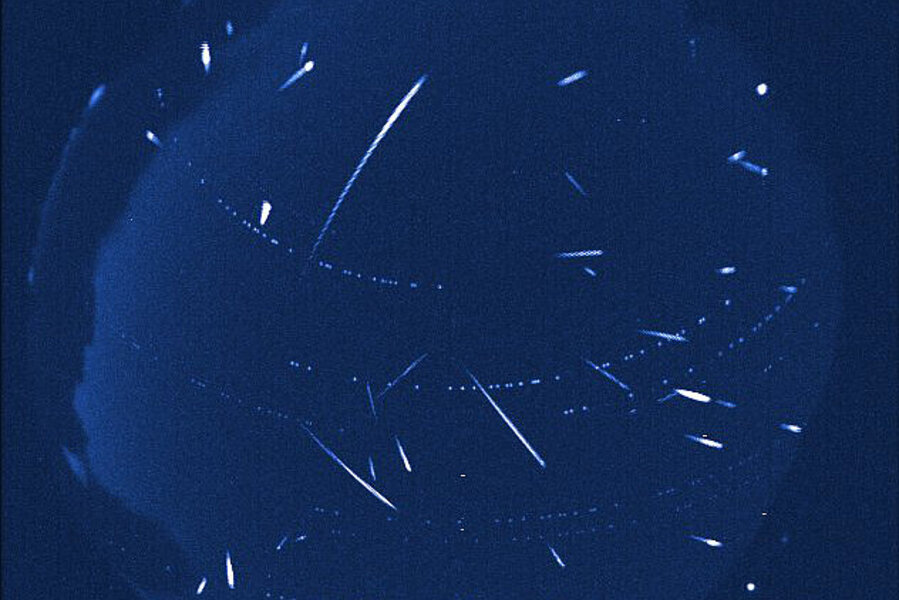Lyrid meteor shower peaks tonight: How to watch from anywhere
Loading...
The 2014 Lyrid meteor shower will be livestreamed by NASA, the space agency has announced. While staring at a computer or mobile screen can't compare to the experience of lying out under the stars, it provides a nice option for city dwellers or anyone stuck under cloudy skies.
Lyrids tend to be fainter than some of the more famous meteor showers, like the Perseids or the Leonids, but they often have long, streamer-like tails that keep glowing for several seconds after the meteor falls. The long tails increase your chances of spotting the meteors, or at least of avoiding the experience of having a friend shout, "I see one!" while you look vainly around the sky.
The best way to watch meteors is to gather a small group of friends or family and lie down in a starburst pattern on blankets or lawn furniture, in a place with dark skies – in other words, as far from streetlights and urban centers as you can get. Keep your heads close together and your feet facing different directions to maximize your collective view of the sky. The full moon of last week's lunar eclipse has waned down to a quarter-moon, but that will still throw enough light to make the Lyrids a little harder to see.
Lyrids, like all meteor showers, are named after the constellation closest to the point that the meteors appear to radiate out from, which in this case is the constellation Lyra, the harp. NASA says that this year, the peak rate will be about 20 meteors per hour, or one every few minutes.
People have been watching the Lyrids for at least 2,600 years. This meteor shower comes each year in mid-April, when Earth passes through a stream of dust left behind by the comet Thatcher (C/1861 G1).
When a comet takes a lap through the solar system, as comet Thatcher does every 415 years, it leaves behind a trail of breadcrumbs, like Hansel and Gretel. Comets have a nucleus usually referred to as a "dirty snowball" – a huge chunk of ice holding together space debris that can range in size from infinitesimal dust flecks to car-sized boulders. As a comet travels from the outer reaches of the solar system toward the sun, the sun's heat and radiation vaporize the outer layers of ice, freeing these particles. Once released from the "snowball," they can glow as part of the comet's tail until they are left behind, to drift forever in space. If a passing planet (like, say, Earth) crosses through this debris trail, the particles will be pulled in by gravity to create a meteor shower.
As the grains fall through Earth's atmosphere, they can reach speeds of up to 110,000 mph, causing them to ignite and burn. That creates the flash of light and streak that we see as a shooting star.






